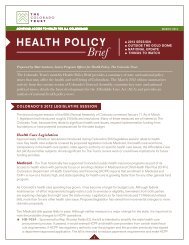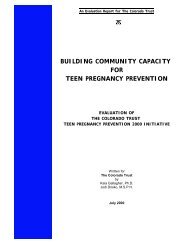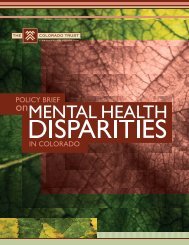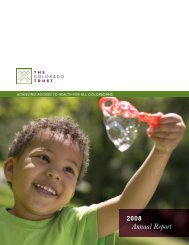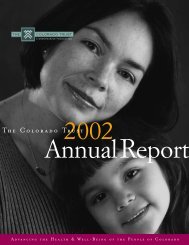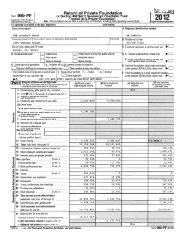After-School Initiative's Toolkit for Evaluating
After-School Initiative's Toolkit for Evaluating
After-School Initiative's Toolkit for Evaluating
You also want an ePaper? Increase the reach of your titles
YUMPU automatically turns print PDFs into web optimized ePapers that Google loves.
Guarantee anonymity or confidentiality: Programs may choose to have surveys administered anonymously or confidentially. Anonymity<br />
means that absolutely no identifying in<strong>for</strong>mation will be collected from respondents. Confidentiality indicates that programs en<strong>for</strong>ce clear<br />
rules prohibiting unauthorized staff access to any in<strong>for</strong>mation that would identify a particular respondent. NRC recommends administering<br />
surveys anonymously using no personal identifiers when using toolkit questions in a “post-only” <strong>for</strong>mat. ASI program staff should refer to<br />
consent <strong>for</strong>ms when determining whether to make the survey anonymous or merely confidential.<br />
Begin the survey with more general, less threatening questions: Place the most sensitive or personal questions closer to the end of<br />
the survey. This includes questions on socio-demographic characteristics such as age, race or ethnicity, and questions within the positive<br />
life choices outcome domain.<br />
Make the survey friendly and attractive: Surveys that are well laid out and logical will ensure higher response rates. Use caution when<br />
adding unnecessary mood boosters like cartoon graphics that might bias results. Here are some suggestions to make the survey more<br />
appealing to youth:<br />
• Use appropriate size fonts (i.e., 11 point or 12 point font).<br />
• Use interesting, but easy-to-read fonts (i.e., Comic Sans MS, Kristen ITC or Pooh, rather than Jokerman).<br />
• Make sure the order of questions is logical and easy to follow. For younger audiences, consider adding the leading stem of the<br />
question to each question instead of only listing it at the start of a question set.<br />
• Avoid designing a survey that looks like a “test.”<br />
• Print surveys on pleasingly colored paper.<br />
• Avoid overcrowding of questions — allow enough “white space” on each page.<br />
• If the number of questions makes the survey too long <strong>for</strong> one implementation, create more than one survey and administer it on<br />
different days.<br />
In addition, ASI program staff may want to customize questions from this toolkit so individual participants can relate to them. For<br />
instance, many program quality questions use the word “staff.” Programs may want to change this to program leader, teacher or some<br />
other term used at the program to mean those individuals working with the youth. Other ideas <strong>for</strong> customization are provided throughout<br />
the toolkit as “helpful hints.” The wording of questions, however, should not be changed if changes would impact the nature of the<br />
question. NRC evaluation liaisons will help program staff make these determinations as surveys are drafted. ASI program staff is advised to<br />
consult with their NRC evaluation liaison to customize toolkit surveys electronically.<br />
<strong>Toolkit</strong> <strong>for</strong> <strong>Evaluating</strong> Positive Youth Development 7



